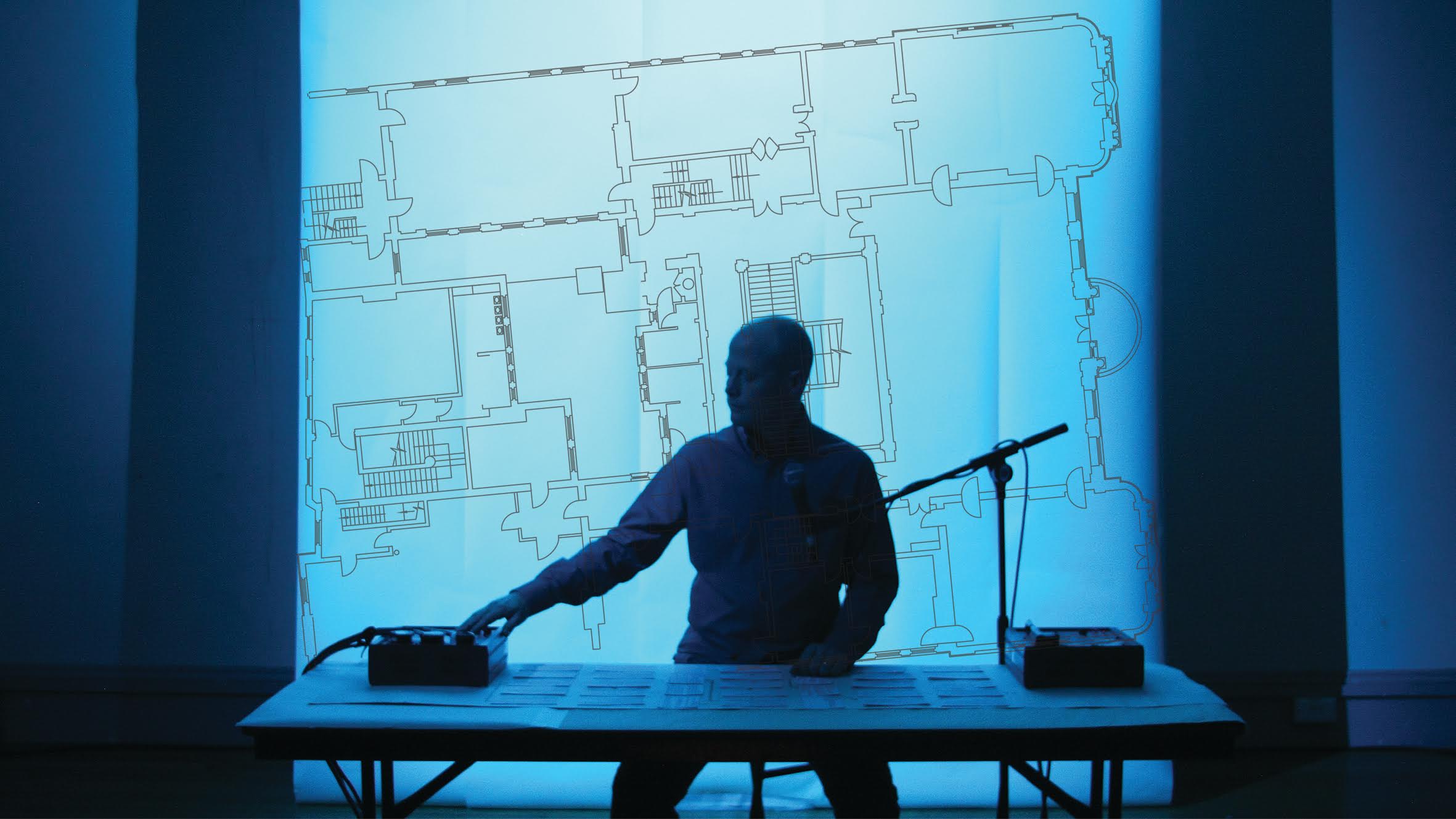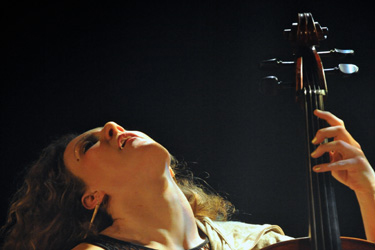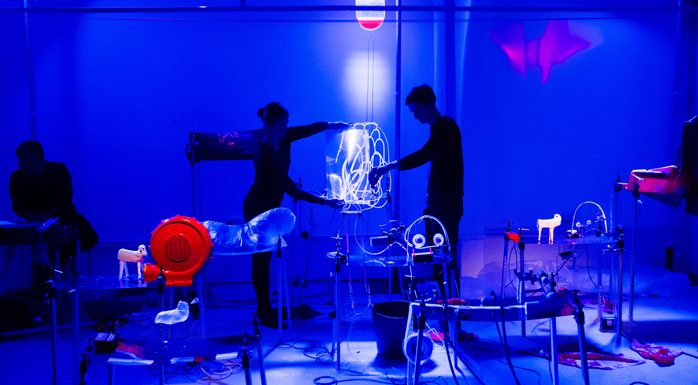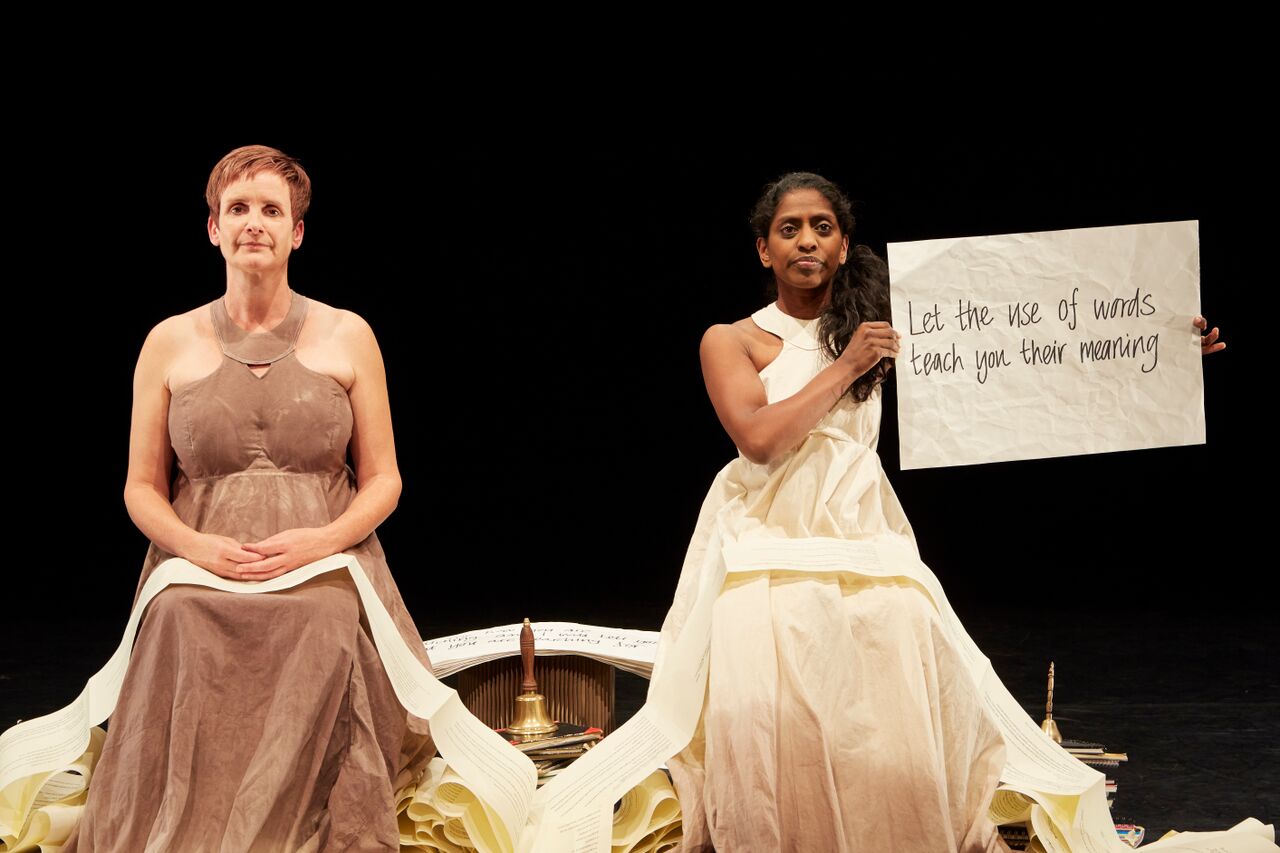Today we’ve had squally showers and sunny spells. And wind, it’s very windy. Welcome to Scotland in the summer! Walking around Edinburgh a few days before the Fringe kicks in is always an odd experience – witnessing Brigadoon rising from the mists and assembling itself. This year, everything seems to be happening a little late. The Fringe for a start – it traditionally starts on the first Friday of August, which this year is the latest that could be, 7 August. And due to rain and high winds, some venues aren’t yet ready – the brand new Circus Hub, which has ousted the Ladyboys from the Meadows, has one of its two tents up, the Beauty. Lafayette is currently a skeleton, a giant geodesic dome with no covering. Word is it will open on 10 August – a day after its press day, now postponed – so there goes my schedule. I had a straight run of six shows booked for Sunday which I’ll now have to see next week. Elsewhere, Teviot Square is a building works. Not because of the Fringe, but because of redevelopment. So what is usually the hub of the more mainstream end of the Fringe, rife with leafleteers and beer garden drinkers, boasting a giant purple cow in its centre, is now fenced off – with the Gilded Balloon and the Pleasance Dome marooned forlornly on the edges. The cow has moved to George Square, which already hosts the various Spiegeltents hosted by Assembly, so it’s looking pretty full in there, even without any people filling in the small amount of space between structures.
Over the next couple of days, before the official opening on Friday, previews, press shows, private views and venue launches are the order of the day. I feel I’ve done my time with the schmoozing events (do I really need to drink any more cheap wine, or eat any more canapes, in this life?), so I’m going to see shows instead.
I’m often asked what I recommend, out of the thousands of shows on offer. Which is a difficult question, as depends what you’re after. The Fringe is a great big mish-mash of the good, the bad and the so ugly you wouldn’t want to wish it upon your worst enemy. If you go every year, your radar ability improves with each visit. But it is also the case that curation has become a key element of this supposedly uncurated festival. This is in some ways a good thing in that it provides some help in working through so much choice – but perhaps makes it even harder for an unknown artist or company to break through.
Anyway – I can’t say what you should see, but only share what I’m seeing n the first half…
First up, I’m going to be spending a lot of time at Summerhall. I’ve already seen some gems on the preview days: Sue MacLaine’s Can I start Again Please? is glorious piece of theatre, told in many language (verbal, visual, physical). Seth Kriebel’s We This Way is an interactive performance that is a lovely exploration of the mechanics of storytelling. Remote Control’s Project HaHa a darkly surreal, absurdist romp by a talented team of young women. Moon Fool’s Titania a one-woman musical tour de force that unpicks Shakespeare’s A Midsummer Night’s Dream. And so much more to come at Summerhall, including Grid Iron, Dancing Brick, Sh!t Theatre, Stan’s Cafe, Two Destination’s Near Gone, and the wonderful Dudendance who are in fact to be found out in the countryside, in the Scottish Borders, with a genuinely site-responsive piece called Borderland. It is presented by Summerhall, though, and the coach leaves from there – just two dates, though – 22nd and 23rd so get in quick.
Summerhall is also the home to a number of curated programmes, including the Aurora Nova, Northern Stage, Big in Belgium, and The Place – little oases of good taste to help guide you through the month. A lot of the British Council Showcase is also at Summerhall – although they can also be found at other enterprising venues such as Zoo and Dance Base. The BC Showcase is a bunch of shows of all sorts from all over the UK presented to overseas delegates in the last week of the Fringe, and includes the magnificent Liz Aggiss with The English Channel, Clod Ensemble’s The Red Chair, and KILN’s The Furies.
Other favourite venues include Zoo, where you’ll find a hefty amount of good dance and physical/visual theatre, including Clout with new show Feast. I’ll also be taking a chance on a few shows I know very little about, but sound interesting, including Souvenirs, Herstory, and Lost for Words. Other venues with interesting looking dance/physical theatre work include Spotlites and Greenside.
The Pleasance is a mixed bag, with a heavy emphasis on comedy, but traditionally also with a good number of high-quality theatre shows. Look out for Paul Lucas’ verbatim piece Trans Scripts, Blind Summit’s Citizen Puppet, Fiction by shunt’s David Rosenberg, Hair Peace by Vic Melody, and Gecko’s The Institute.
Over at Dance Base, the ever-inventive Al Seed is presenting Ooog, billed as a companion work to The Factory, a fantastically visceral and physical piece that was shortlisted for a Total Theatre Award and was presented at the London International Mime Festival. Dance Base also plays host
The Underbelly’s Circus Hub, once it has sorted out its teething problems, will be host to a whole month of circus shows from all corners of the world. Total Theatre Award winner Bromance will be there, as will Ockham’s Razor, another vibrant young(ish) UK circus company. I’m particularly looking forward to Dolls by Circ La Putyka, and intrigued by Les Inouis, a wordless circus-theatre show about migrancy by Patrick Masset.
Elsewhere, also circus and also presented by Underbelly, the fabulous Circa’s latest work Close Up premieres at Edinburgh – catch that at George Square. There’s another new circus venue on the block – down at Fountainbridge to be precise. Big Sexy Circus have all sorts on show. I’ll be there for Hitchcock-inspired circus show Hitch! Institut Francais is presenting Crying Out Loud supported circus show Bruit de Couloir, a juggling-dance cross-over. Talking of which, Assembly Venues have Gandini Juggling’s 4 X 4 Ephemral Architectures, along with the phenomenal Traces by top Montreal circus company Les Sept Doits, which returns triumphant to the Fringe. Assembly is also playing host to hip-hop theatre-maker Jonzi D, who’s here with The Letter. If clown and physical comedy is your yen, then there are a couple of shows at Assembly Roxy to look out for: EricThe Fred, and Jamie Wood’s Oh No! If it’s cabaret you’re after, The Famous Spiegeltent has a new show – La Clique’s Velvet.
New Town Theatre is a venue I’m fond of. I’m taking a chance on Yerma, and The Outsider looks interesting. They have also programmed some unusual looking music theatre pieces which might be worth a look and listen.
And the Traverse of course must be mentioned. A year-round venue that during August breaks the usual Fringe protocol by having artists play shorter runs at moveable times. Tim Crouch will be there for the tenth anniversary of his groundbreaking show An Oak Tree. And Bryony Kimmings, who once won a Total Theatre Award as Best Newcomer, is now to be found at the Trav with her new show, Fake It ‘till You Make It. Which is where you’ll find me on Friday, the official opening day of this year’s Edinburgh Festival Fringe.
Image: Tim Spooner The Assembly of Animals, part of the British Council Showcase, at Summerhall 24-30 August 2015 as part of the Edinburgh Festival Fringe 2015.
For information on all shows, and to book tickets, see www.edfringe.com





